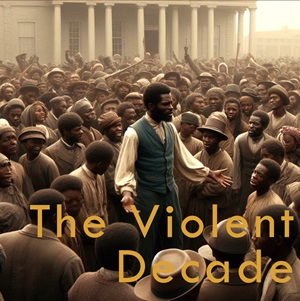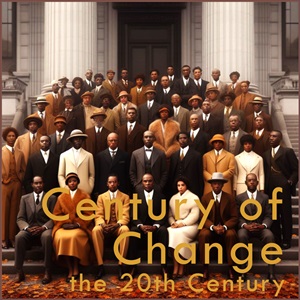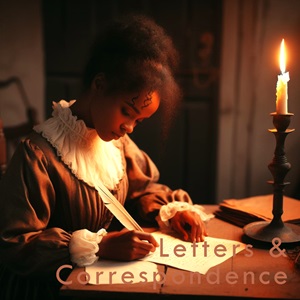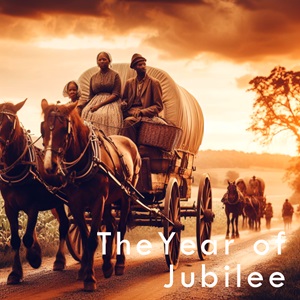
Central Pennsylvania's journey
from enslavement to freedom
“Speak up, speak out, get in the way. Get in good trouble, necessary trouble, and help redeem the soul of America.” —John Lewis, 01 March 2020.










Year of Jubilee back in print
The Afrolumens Project book, The Year of Jubilee (2 volumes), is back in print and available on Amazon. Updated with new covers, the volumes are at the links below.
The Year of Jubilee: Men of God, available here
The Year of Jubilee: Men of Muscle, available here
New Items
- John Hall and Negro Elizabeth Declare Themselves Free
- November 1781: Dick Butcher, sold multiple times, finally escapes to Philadelphia where he ships out on a privateer and ends up in the middle of vicious sea battles with British warships.
- July 1719: Johney Escapes From Virginia First newspaper ad for an escaped slave published in a Philadelphia newspaper.
- Fugitive Slave Recovery Document for Isaac, 1804 From slaveholder W. James Brown of Cumberland County.
- Image of a pass for free Black man Edward Butler issued in 1806 in Gettysburg, Pennsylvania.
- Summary and text of the 1826 Pennsylvania Supreme Court Decision that ended the illegal enslavement of the children of term slaves.
- What does "Country-born" mean? What are pantaloons, castor hats and pistoles? Why would a captured runaway be put in a goal?
Escape notices, documents and advertisements for enslaved people are filled with obscure and archaic terms. The Afrolumens Project has created a quick-reference glossary: Afrolumens Glossary of Enslavement Terms..
On This Date
January events important to local African American history (see the whole year)
January 1, 1826: African American preacher Jarena Lee preaches at the Methodist Episcopal Church on the southeast corner of Second and South streets in Harrisburg. While in town, she stayed with a Mr. Williams. (Read more here) January 1, 1831: William Lloyd Garrison publishes his first issue of The Liberator. January 1 1836: American Anti-Slavery Society lecturer Samuel L. Gould speaks at the Wesley Church in Judystown, an African American neighborhood of Harrisburg, addressing a mostly African American audience. His series of anti-slavery speeches inflames the local town council, which, fearing he is "exciting the colored population of this borough," issues an official resolution calling for him to "desist from his efforts." January 1, 1863: The Emancipation Proclamation is issued. (text here) January 9, 1866: The first classes are held at Fisk University, Nashville, Tennessee. This historic African American college is named for General Clinton B. Fisk of the Tennessee Freedman's Bureau. Graduates include W.E.B. DuBois and John Hope Franklin. January 10, 1861: Florida becomes the third state to secede from the Union. January 11, 1861: Alabama becomes the fourth state to secede from the Union. January 14, 1836: Harrisburg Anti-Slavery Society is formed. Its president is Rev. Nathan Stem, of the Episcopal Church. Vice-presidents are William W. Rutherford and Mordecai McKinney. Other notable members are Alexander Graydon and Rev. John Winebrenner. January 15, 1863: Harrisburg's leading African American residents meet in the Bethel A.M.E. Church to form a response to the Emancipation Proclamation. Hailing a "new era in our country's history," they pledge to take up arms alongside white soldiers "if called upon." January 15, 1929: Civil rights leader and founder of the Southern Christian Leadership Conference, Martin Luther King, Jr. is born in Atlanta, Georgia. January 16, 1838: First statewide meeting of the Pennsylvania Antislavery Society opens in Harrisburg's Shakespeare Hall, a year after its founding in the same place. The three days of meetings are attended by Charles C. Rawn. January 19, 1861: Georgia becomes the fifth state to secede from the Union. January 26, 1861: Louisiana becomes the sixth state to secede from the Union. January 28, 1838: Anti-slavery activist William H. Burleigh speaks in Harrisburg. Burleigh had attended a lecture by Dr. Booth of the Pennsylvania Colonization Society, held at a local church on the same day, and in a letter to The Liberator, denounced Booth as a "pro-slavery man" promoting colonization. January 29, 1861: Kansas is admitted to the Union as a free state. January 31, 1845: Attempted kidnapping in Harrisburg of African American resident Peter Hawkins by the notorious slave catcher Thomas Finnegan.
Read more about Samuel L. Gould and his activities in Harrisburg.
January 3, 1816: Stephen Smith becomes a free man as he buys his freedom from Thomas Boude of Columbia with fifty dollars borrowed from a friend. He would rise to become a leader in his community and church, an Underground Railroad activist, and the wealthiest African American businessman in America during his time.
January 7, 1891: Novelist and dramatist Zora Neale Hurston is born in Eatonville, Florida.
January 9, 1861: Mississippi becomes the second state to secede from the Union.
January 13, 1863: Federal officials formally authorize the raising of African American troops for the South Carolina Volunteer Infantry.
Read more about how the Harrisburg Anti-Slavery Society was formed
Read the proclamation here.
January 18, 1856: Dr. Daniel Hale Williams is born in Hollidaysburg, Pennsylvania. Dr. Williams performed the first open heart surgery in 1893 when he sutured a knife wound to the pericardium of a stabbing victim.
January 20, 1838: At the state Constitutional Convention in Harrisburg, delegates voted 77 to 45 to restrict the vote in Pennsylvania to "white freemen." African American men would not regain the right to vote in Pennsylvania until passage of the 15th Amendment, in 1870.
January 25, 1972: Shirley Chisholm announces her candidacy for the presidency of the U.S.
January 27, 1800: A public auction is held in Lower Paxton Township, at the home of tanner Jacob Awl, to sell enslaved persons Peter and Grace, as well as other possessions.
January 31, 1837: Shakespeare Hall in Harrisburg is the site of a convention to form a state anti-slavery society. Three hundred people attended and the proceedings were reported to The Liberator by correspondent John Greenleaf Whittier.
The url address of this page is: https://www.afrolumens.com/index.htm
